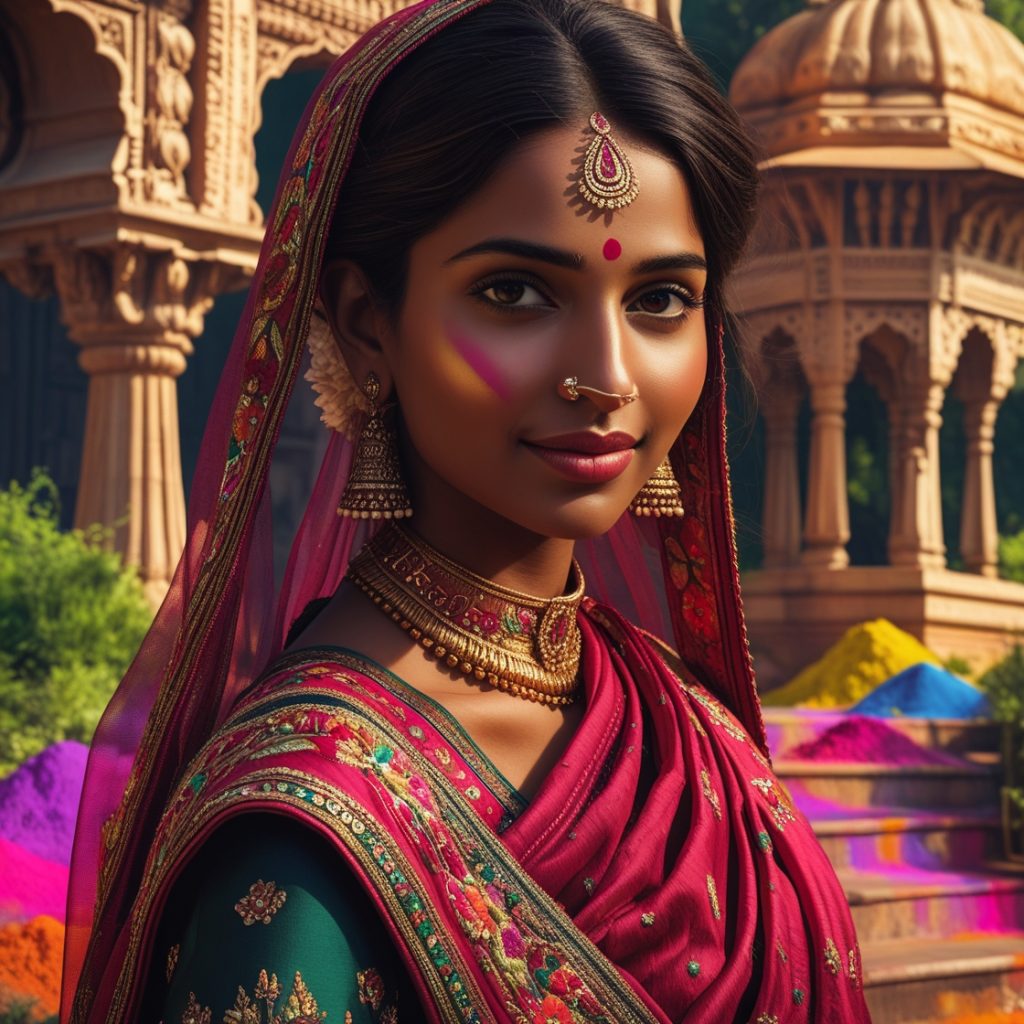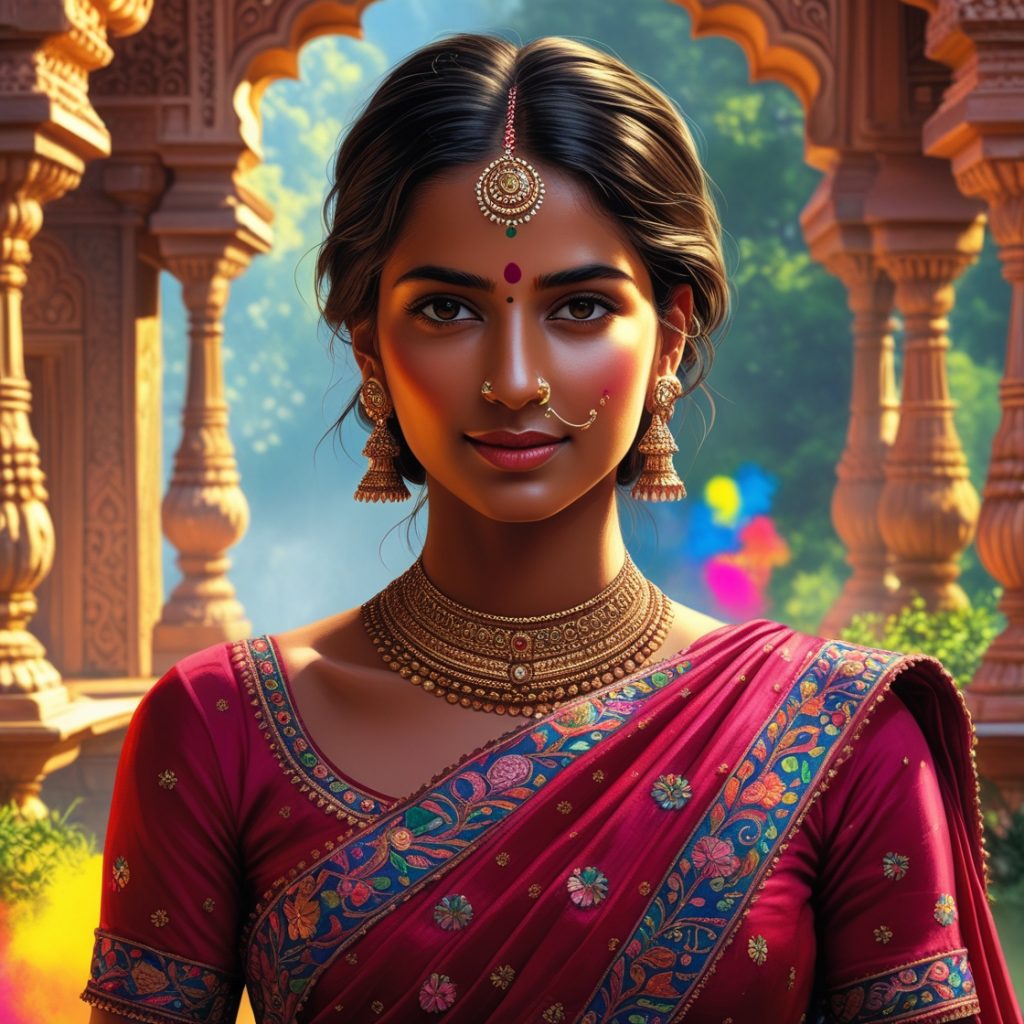India, a land known for its vibrant diversity and rich cultural heritage, is a mosaic of languages, traditions, cuisines, festivals, and art forms. With a history spanning thousands of years, Indian culture reflects a harmonious blend of ancient customs and modern influences, making it one of the most unique and enduring civilizations in the world. This article explores the multifaceted aspects of Indian culture, including its philosophy, religious traditions, art, architecture, and social norms.
Philosophical and Religious Foundations
The essence of Indian culture lies in its deep philosophical roots. Ancient scriptures like the Vedas, Upanishads, and Bhagavad Gita encapsulate profound wisdom, guiding humanity on spiritual, ethical, and existential matters. Indian philosophy emphasizes harmony between the physical and metaphysical realms, fostering values like tolerance and inclusivity.
Religion plays a pivotal role in shaping Indian identity. India is the birthplace of major religions like Hinduism, Buddhism, Jainism, and Sikhism, each contributing unique philosophies to the cultural fabric. Hinduism, with its polytheistic framework, celebrates a pantheon of deities and embraces diverse practices, from rituals to meditation. Buddhism and Jainism, emerging as reformative movements, highlight non-violence, compassion, and detachment. Sikhism, founded in the 15th century, emphasizes equality and service.
India’s secular ethos is evident in its accommodation of religions like Islam, Christianity, Zoroastrianism, and Judaism, which have thrived here for centuries. Festivals like Eid, Christmas, Navroz, and Passover are celebrated alongside traditional Indian festivals, showcasing unity amidst diversity.
Language and Literature
India is home to 22 official languages and hundreds of regional dialects, making it a linguistic treasure trove. Sanskrit, often regarded as the mother of many Indian languages, has been instrumental in preserving ancient knowledge. Classical languages like Tamil, Telugu, Kannada, and Malayalam boast rich literary traditions, while Hindi, as the most spoken language, bridges regional diversity.
Indian literature is a testament to its cultural depth. The Mahabharata and Ramayana, epic narratives of virtue, heroism, and morality, are revered not only in India but across Southeast Asia. Modern Indian authors like Rabindranath Tagore, R.K. Narayan, and Arundhati Roy have garnered international acclaim, blending local themes with universal concerns.
Art and Architecture
Indian art is as diverse as its people. From ancient rock paintings at Bhimbetka to Mughal miniature paintings, Indian artistry spans millennia. Traditional dance forms like Bharatanatyam, Kathak, Odissi, and Kathakali tell stories through intricate movements and expressions, often accompanied by classical music.
Music in India is deeply spiritual, with classical genres like Hindustani and Carnatic rooted in ancient traditions. Instruments like the sitar, tabla, and mridangam produce melodies that evoke profound emotions. Bollywood, India’s thriving film industry, has also made music a significant aspect of popular culture.
Indian architecture reflects its historical and religious influences. Ancient temples like the Khajuraho Group of Monuments and Brihadeeswara Temple display exquisite craftsmanship. The Taj Mahal, a UNESCO World Heritage Site, symbolizes Mughal opulence and undying love. Modern landmarks like the Lotus Temple and urban infrastructure reflect India’s evolving architectural landscape.
Festivals and Celebrations
Indian festivals are colorful expressions of its cultural ethos. Each region and religion brings unique celebrations, often marked by rituals, music, dance, and feasting.
- Diwali, the festival of lights, symbolizes the victory of light over darkness.
- Holi, known as the festival of colors, signifies joy and unity.
- Durga Puja, celebrated in West Bengal, honors the goddess Durga.
- Onam, Kerala’s harvest festival, showcases cultural dances and feasts.
- Pongal in Tamil Nadu and Lohri in Punjab celebrate agricultural abundance.
The multicultural nature of Indian society ensures that festivals like Eid, Christmas, and Baisakhi are celebrated with equal fervor, reflecting its inclusive spirit.
Cuisine: A Gastronomic Adventure
Indian cuisine, known for its bold flavors and aromatic spices, is an integral part of its culture. The diversity in food reflects regional variations and historical influences.
- In the north, butter naan, dal makhani, and kebabs showcase Mughal-inspired flavors.
- Southern India is renowned for dosa, idli, and sambar, with a focus on rice and coconut.
- The west offers unique dishes like dhokla and thepla from Gujarat and spicy curries from Maharashtra.
- Eastern India, known for its love of sweets, is famous for rosogolla and sandesh.
Street food, from Mumbai’s vada pav to Delhi’s chaat, is a gastronomic delight, offering a glimpse into India’s culinary creativity.
Family and Social Structure
The family remains a cornerstone of Indian society. Traditional joint families, though evolving into nuclear setups in urban areas, emphasize close bonds and shared responsibilities. Respect for elders, hospitality, and collective decision-making are key aspects of Indian family life.
Marriages in India are grand social events, often involving elaborate rituals, music, and dance. Arranged marriages, though evolving, are still prevalent, reflecting a blend of tradition and modernity.
Traditional Attire and Jewelry
Indian attire is a celebration of color, fabric, and craftsmanship. The sari, a versatile drape worn by women, varies in style and material across regions. The salwar kameez, lehenga, and modern fusion wear are equally popular. For men, traditional attire includes the kurta pajama, dhoti, and sherwani.
Jewelry is deeply symbolic in Indian culture, signifying wealth, tradition, and spirituality. Gold ornaments, intricately designed, are often passed down generations as heirlooms.
Modern Influences and Global Impact
In the 21st century, Indian culture is a dynamic interplay of tradition and innovation. Urbanization, technology, and globalization have influenced lifestyles, while ancient practices like yoga and Ayurveda have gained international recognition. Indian cinema, especially Bollywood, enjoys a global fanbase, while Indian fashion and cuisine are celebrated worldwide.
Challenges and Preservation
Despite its richness, Indian culture faces challenges like urbanization, globalization, and the erosion of traditional practices. Efforts to preserve regional languages, arts, and crafts are crucial to maintaining cultural diversity. Initiatives like National Heritage Projects and festivals celebrating indigenous traditions aim to keep India’s cultural essence alive.
Conclusion
Indian culture, with its incredible diversity, is a living testament to the resilience and adaptability of its people. Its philosophy of inclusivity, respect for nature, and celebration of life resonates across borders, inspiring humanity to embrace unity in diversity. As India continues to evolve, its cultural legacy remains a beacon of wisdom and creativity, enriching not only its citizens but the world at large.



